
Point Malcolm Lighthouse is unique in Australian maritime history, holding the extraordinary distinction of being the Southern Hemisphere’s only inland lighthouse. This modest yet significant structure rises from the stark rocky outcrop on the eastern shore of The Narrows, the crucial waterway connecting Lake Alexandrina and Lake Albert in South Australia’s Murray River system. Built to guide river traffic through these treacherous freshwater passages, this lighthouse represents a remarkable chapter in Australia’s inland navigation history, serving vessels that carried the produce and prosperity of the Murray River basin to coastal ports.
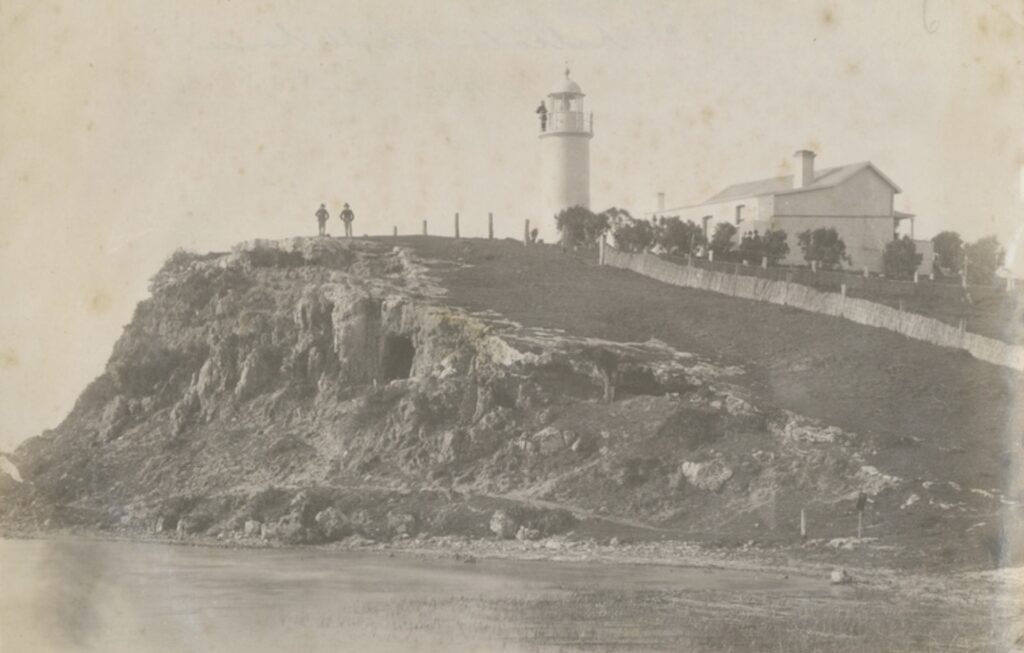
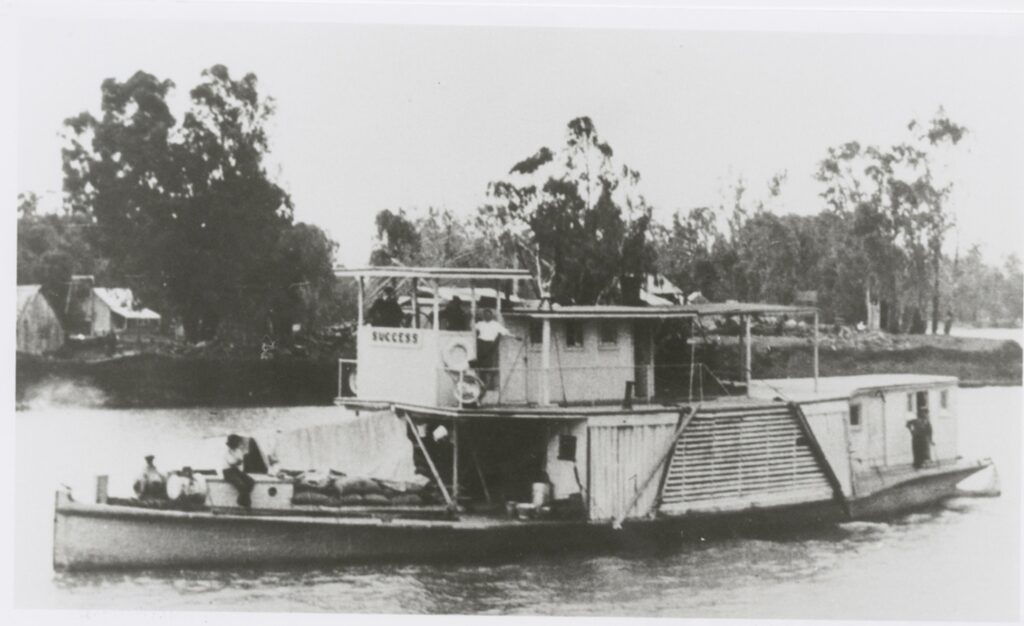
Positioned on the strategic point opposite the small Aboriginal community of Narrung, the lighthouse commands sweeping views across the expansive waters where Lake Alexandrina narrows before opening into Lake Albert. This location, known as The Narrows, presented significant navigation challenges for the paddle steamers, supply boats, and cargo barges that formed the lifeline connecting the isolated farming settlements, homesteads, and river ports scattered throughout the Murray-Darling system. The convergence of these vast inland waters created complex currents and shallow areas that could trap unwary vessels, particularly during night crossings when visibility was severely limited.
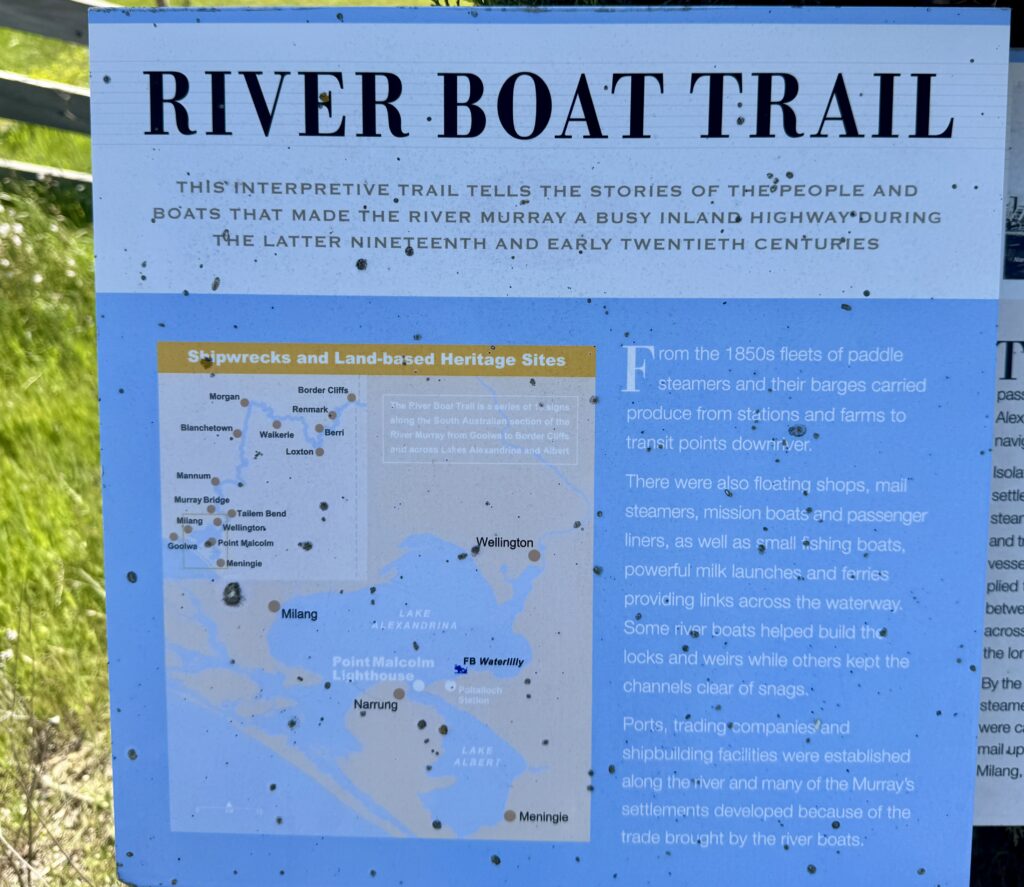
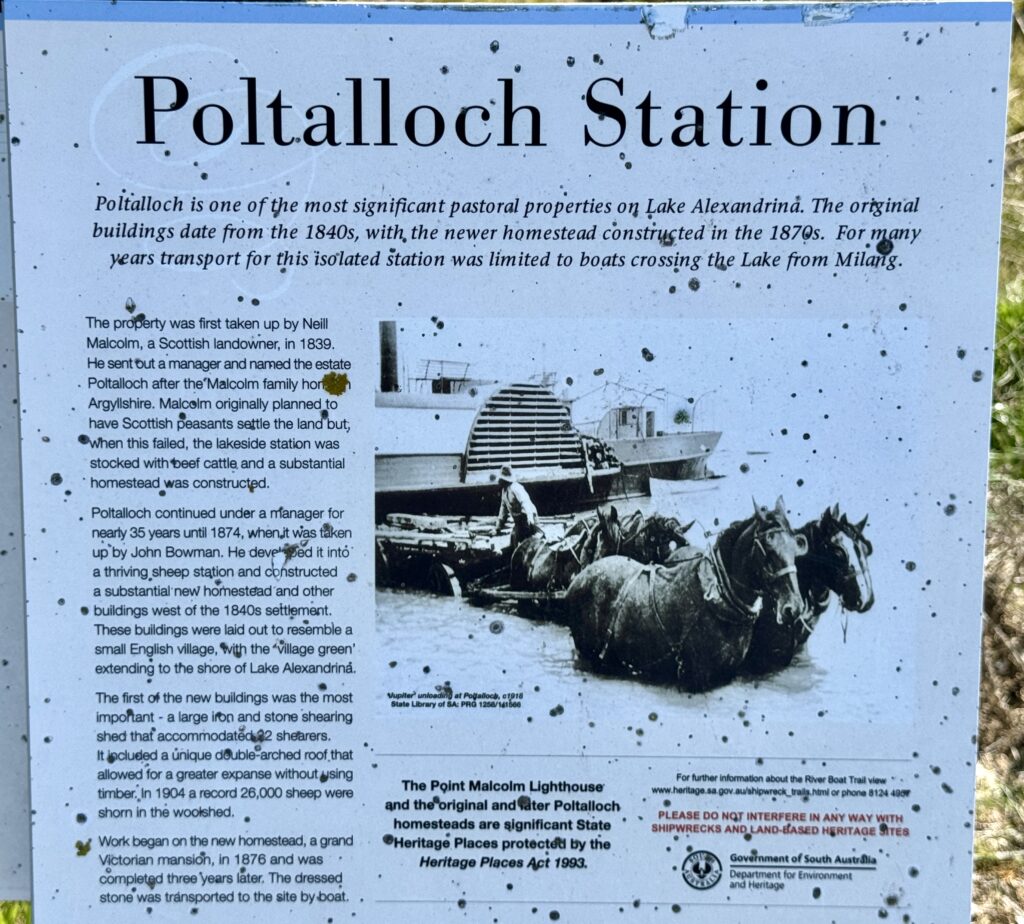
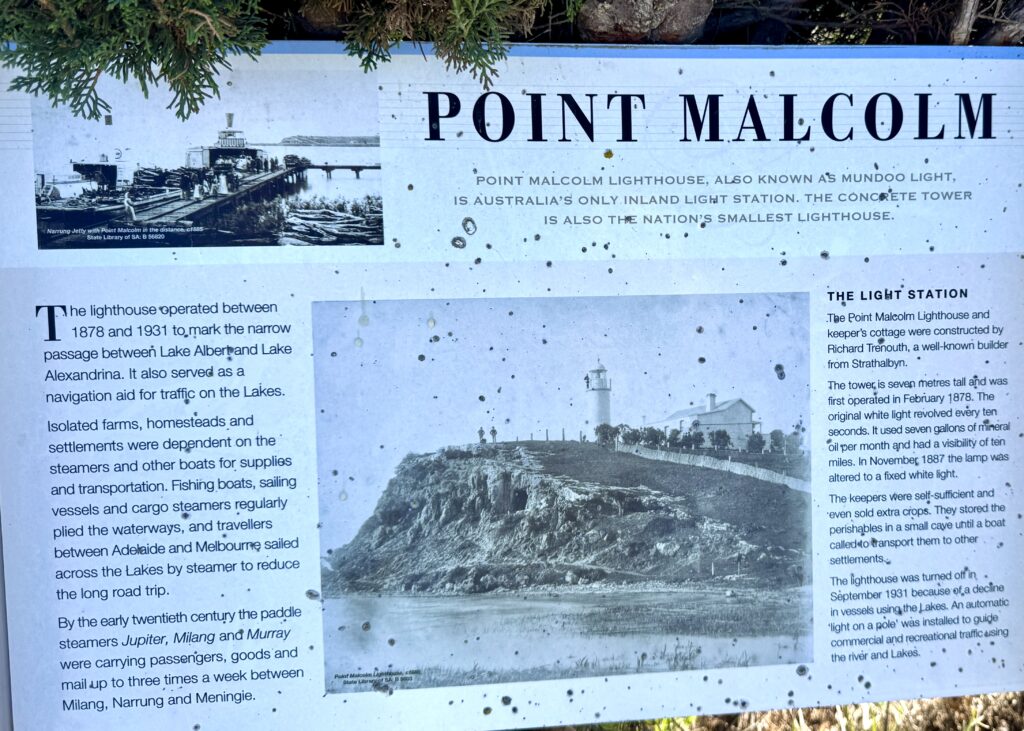
The Ngarrindjeri people, traditional custodians of these waters and lands, had navigated these intricate waterways for thousands of years before European settlement transformed the region into a major inland shipping route. Their intimate knowledge of seasonal water levels, wind patterns, and the subtle dangers of the lake system would prove invaluable to early European settlers who gradually developed the river trade that made Point Malcolm lighthouse essential for safe navigation.
The pressing need for a navigation aid at Point Malcolm emerged during the 1870s as the Murray River trade expanded dramatically, driven by the agricultural development of the riverland regions and the growth of settlements along the river system. The importance of the Murray River trade and the expected increase in the exporting of riverine-delivered produce via Port Victor (now Victor Harbor) led to the decision to build the lighthouse at Point Malcolm, providing essential guidance for vessels carrying wool, wheat, and other produce from the vast inland regions to coastal shipping ports.
Construction began in 1877 under the direction of Richard Trenouth, a well-known builder from Strathalbyn, who undertook the project at the modest cost of £543 for both the tower and keeper’s cottage. This economical construction reflected the practical needs of inland navigation, where a simple but effective beacon could provide adequate guidance for river traffic without the massive engineering challenges faced by coastal lighthouse construction projects.
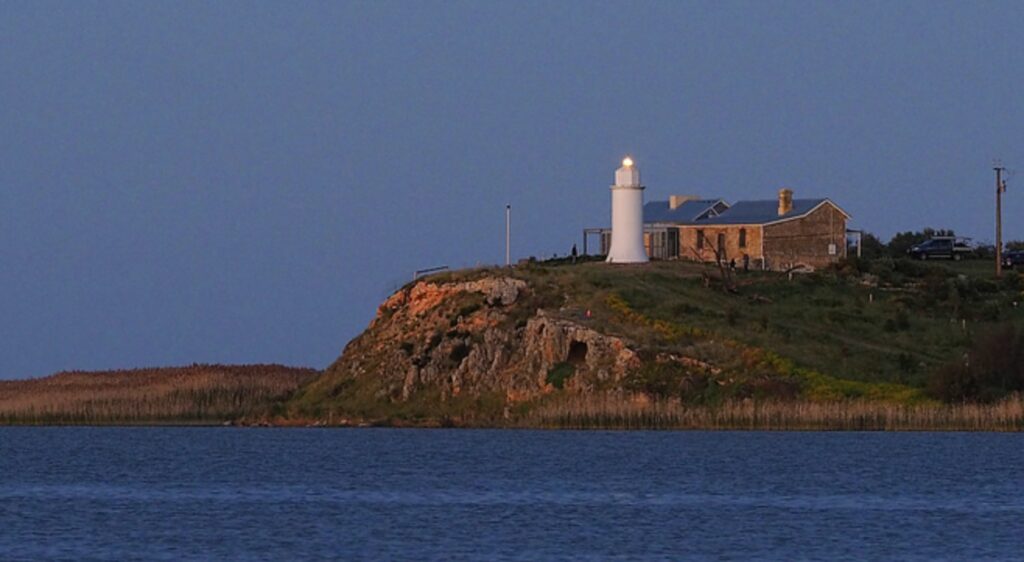
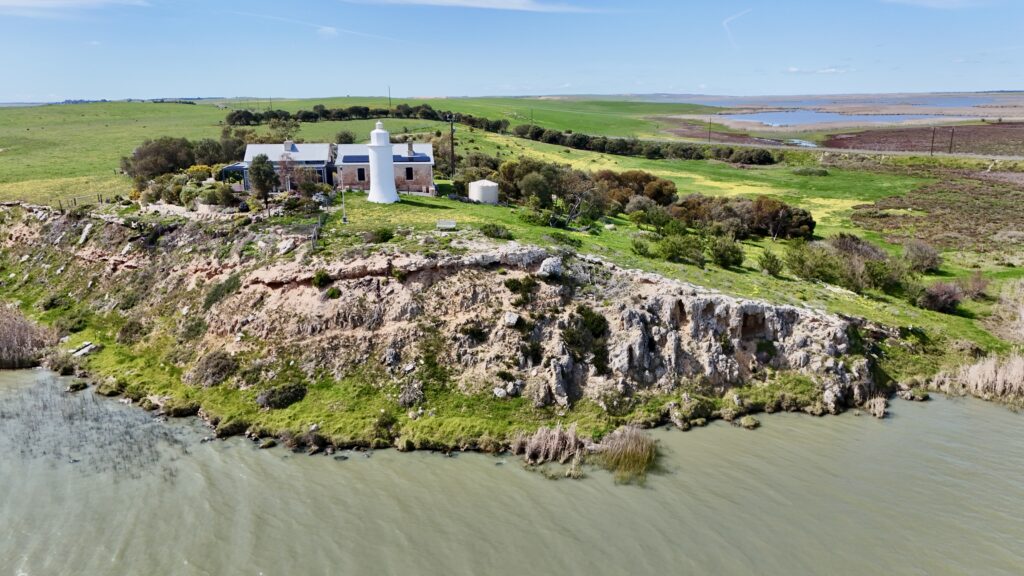
The lighthouse began operations on 1 February 1878, its white light revolving every ten seconds to provide a distinctive signal for mariners crossing the lake during night hours. The original illumination system used seven gallons of mineral oil per month, a remarkably economical operation that reflected the lighthouse’s role in guiding relatively small vessels through the inland waterways rather than massive ocean-going ships approaching from the open sea.
Standing seven meters tall, the lighthouse provided adequate elevation to cast its beacon across the waters of The Narrows, while the adjacent keeper’s cottage housed the lighthouse keepers who maintained this vital navigation aid. The keepers often supplemented their income by selling produce and goods to passing vessels and local communities, creating a small but important commercial hub at this strategic location.
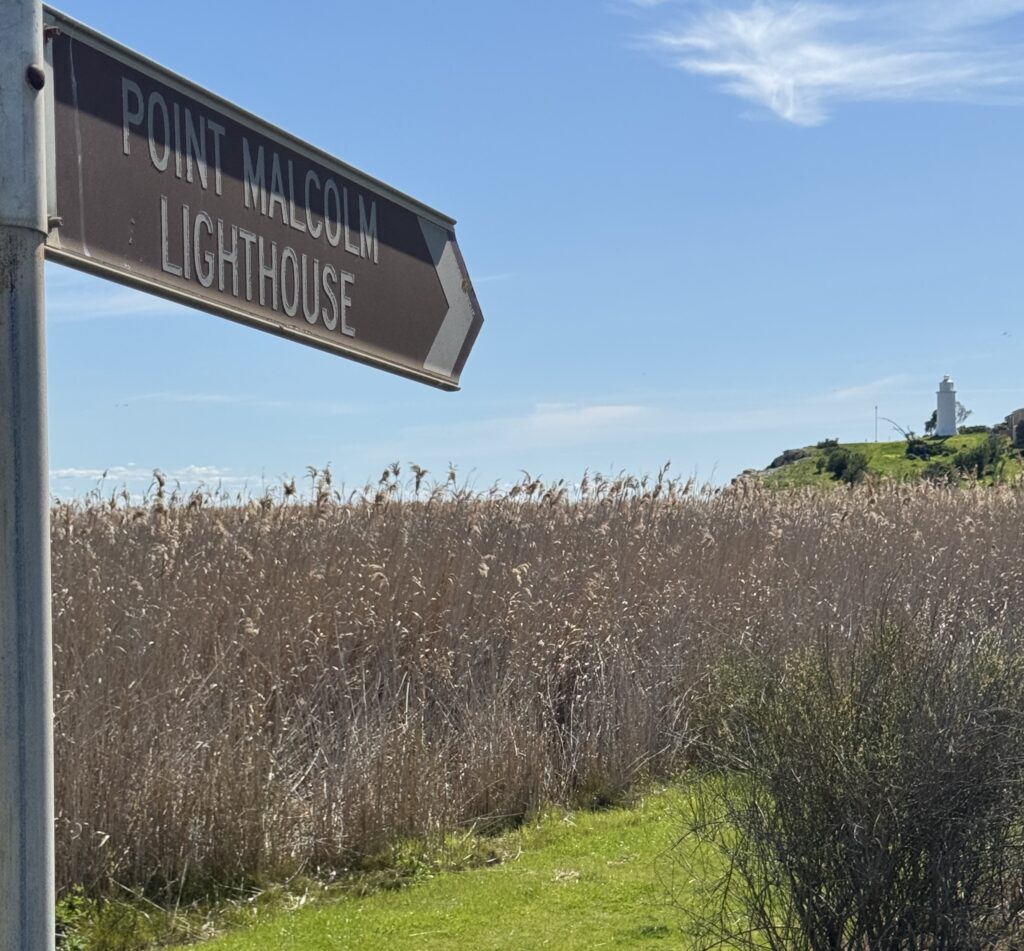
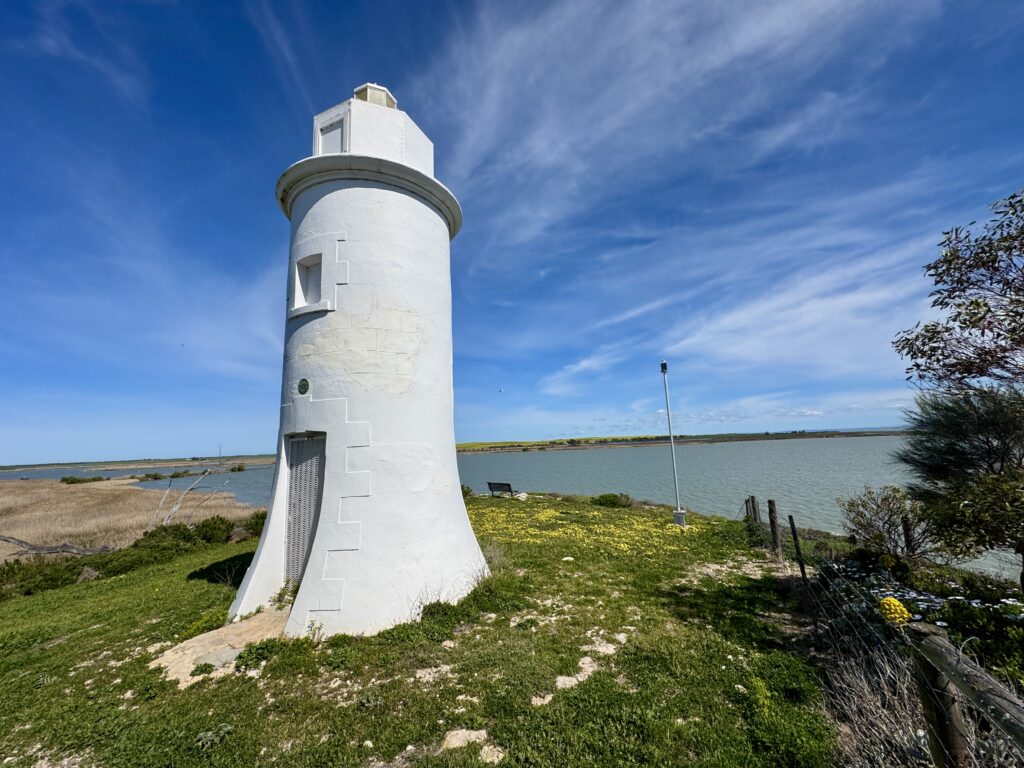
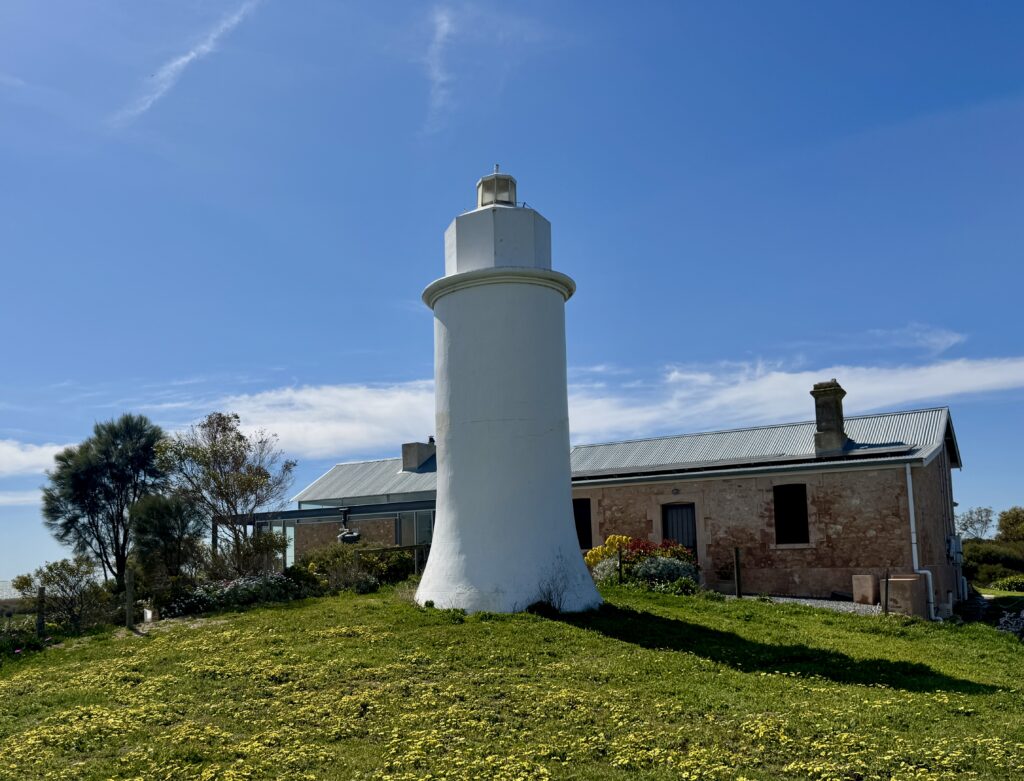
The lighthouse served for more than 50 years as guardian of the Murray River shipping lanes, guiding paddle steamers, cargo barges, and supply boats through the complex waterways that connected isolated communities throughout the river system. During this time, it assisted countless vessels in their waterway crossings, ensuring safe passage for the commerce that sustained the agricultural settlements and river ports of the Murray-Darling basin.
Today, Point Malcolm Lighthouse stands as a heritage-listed monument to South Australia’s inland navigation history, preserved as a unique reminder of the era when river trade flourished throughout the Murray system. This extraordinary structure continues to fascinate visitors as Australia’s only inland lighthouse, representing the ingenuity and determination of colonial engineers who adapted maritime navigation aids to serve the unique challenges of freshwater shipping in the Southern Hemisphere.
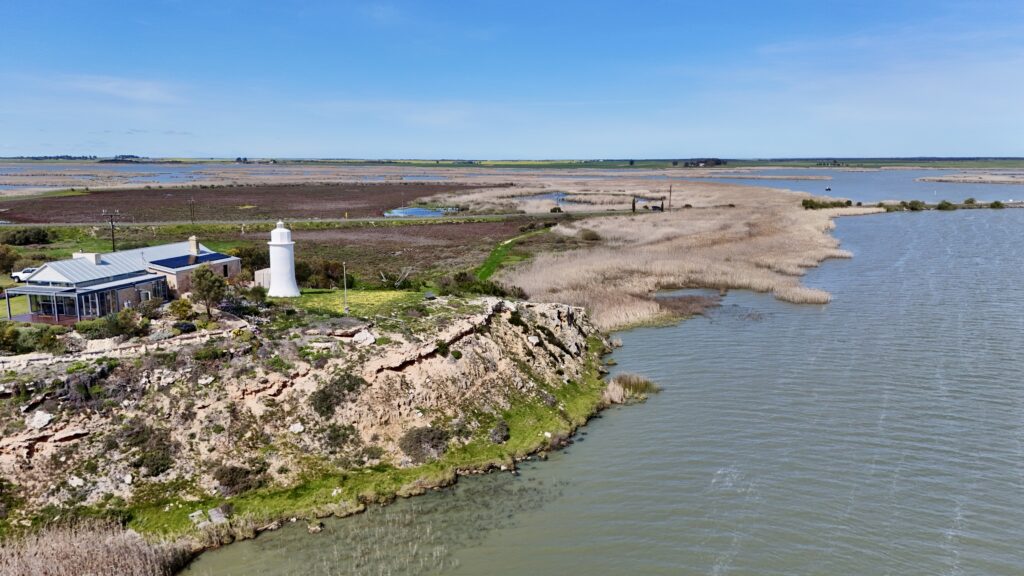
Technical Details
Point Malcolm Lighthouse
- First Exhibited: 1 February 1878
- Status: Heritage display (decommissioned)
- Location: The Narrows, Lake Alexandrina, South Australia
- Construction: 1877-1878
- Designer: South Australian Government Public Works
- Contractor: Richard Trenouth (Strathalbyn)
- Tower Height: 7 metres (23 feet)
- Construction Cost: £543 (tower and cottage combined)
- Material: Local stone construction
- Original Light: White light, revolving every 10 seconds
- Fuel Consumption: 7 gallons mineral oil per month
- Unique Status: Southern Hemisphere’s only inland lighthouse
- Heritage Status: Heritage listed
- Current Operator: Coorong District Council
Disclaimer: Due to the need to get across the “Top End” in the dry season (which usually ends in October), and to spend time in the outback on the way north I have rushed the first stage of Act 3. In order to document the lighthouses I’ve visited I’ve enlisted the help of Elon Grok and A.I. Claude to help on these Lighthouse Stories. Despite their claims of infallibility I’ve found some of their facts not to be accurate and would welcome any corrections, which they will learn from! I have also sourced a number of photos from the public domain (i.e. Dr Google) to compliment the shots I’ve taken on my travels. I would like to concentrate on telling my personal experiences and thoughts as I travel around and intend to reedit these lighthouse stories when I have time.